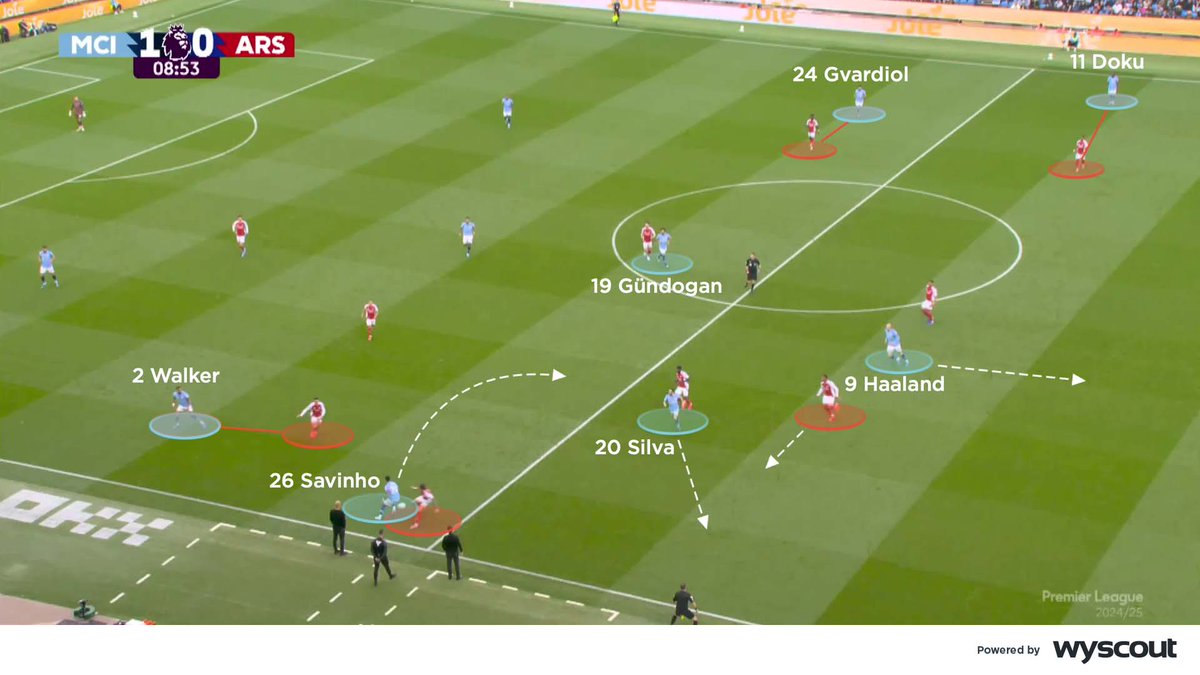👇 Thread!
🇵🇹 José Mourinho 1-0 Mikel Arteta 🇪🇸
🔍 Our coaches have analysed Sunday's north London derby.
⚪ #TOTARS 🔴
🇵🇹 José Mourinho 1-0 Mikel Arteta 🇪🇸
🔍 Our coaches have analysed Sunday's north London derby.
⚪ #TOTARS 🔴
🔍 When they had possession Tottenham were organised into a 4-2-4 formation in which Giovani Lo Celso and Harry Winks formed their midfield (1/8)
⚪ #TOTARS #THFC
⚪ #TOTARS #THFC

🔍 They defended with a 4-4-2 when they were without it, through Moussa Sissoko and Lucas Moura withdrawing from their front four (2/8)
⚪ #TOTARS #THFC
⚪ #TOTARS #THFC

🔍 Spurs prioritised denying Arsenal access to their key players; a combination of an attacker, wide midfielder and central midfielder sought to limit passes to Arsenal’s wide attackers (3/8)
⚪ #TOTARS #THFC
⚪ #TOTARS #THFC

🔍 They also sought to take advantage of the spaces that existed behind Arsenal’s wing-backs, Hector Bellerín and Kieran Tierney (4/8)
⚪ #TOTARS #THFC
⚪ #TOTARS #THFC

🔍 Mikel Arteta’s Arsenal favoured a 3-4-3 formation in which Shkodran Mustafi, David Luiz and Sead Kolasinac featured as their three central defenders (5/8)
🔴 #TOTARS #Arsenal
🔴 #TOTARS #Arsenal

🔍 That 3-4-3 became a 5-4-1 when they defended, through their wide attackers withdrawing into midfield, and their wing-backs into defence (6/8)
🔴 #TOTARS #Arsenal
🔴 #TOTARS #Arsenal

🔍 Arsenal often attempted to switch play by Alexandre Lacazette withdrawing to receive possession and setting it to a midfielder, who then played the relevant pass (7/8)
🔴 #TOTARS #Arsenal
🔴 #TOTARS #Arsenal

🔍 Pierre-Emerick Aubameyang and Nicolas Pépé also withdrew to towards the ball, to open the passing lane to the wing-backs alongside them, before turning to rejoin the attack (8/8)
🔴 #TOTARS #Arsenal
🔴 #TOTARS #Arsenal

• • •
Missing some Tweet in this thread? You can try to
force a refresh
















